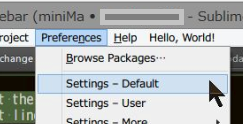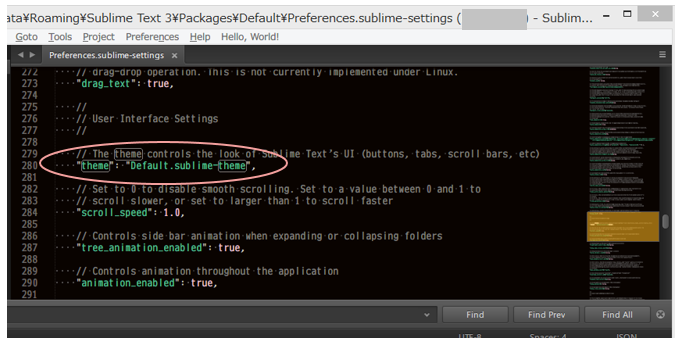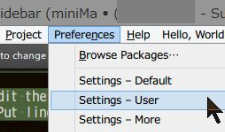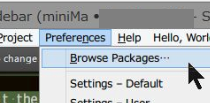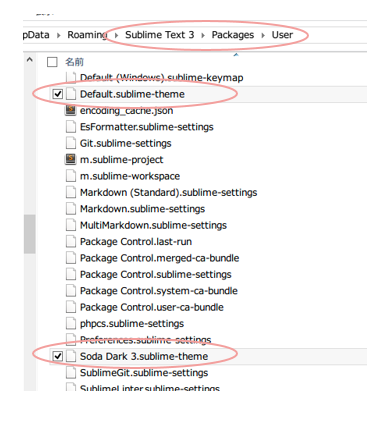-
Check your current default theme name
Preferences > setting - Default
Find "theme"
"theme": "Default.sublime-theme",
I define the theme name as THEME_NAME for only this article.
-
Check your custom theme name
Preferences > setting - User
Find "theme"
Is there no theme? Okay, you're using THEME_NAME you saw earlier. If you saw a theme definition in here, you're using it insted of THEME_NAME (that is overwritten). Now let me re-define THEME_NAME if you found your custom theme here.
-
Make a overwriting-conf file for the theme.
-
Open the User folder
Preferences > Browse-packages
Finder or explorer will open
packagefolder. OpenUserfolder in that. -
Create a new file named
*THEME_NAME*.sublime-theme. Put lines below into the file.[ { "class": "minimap_control", "settings": ["always_show_minimap_viewport"], "viewport_color": [253, 180, 30, 146], "viewport_opacity": 1.0, }, { "class": "minimap_control", "settings": ["!always_show_minimap_viewport"], "viewport_color": [253, 180, 30, 146], "viewport_opacity": { "target": 0.0, "speed": 4.0, "interpolation": "smoothstep" }, }, { "class": "minimap_control", "attributes": ["hover"], "settings": ["!always_show_minimap_viewport"], "viewport_opacity": { "target": 1.0, "speed": 20.0, "interpolation": "smoothstep" }, }, ]The file name should be
*THEME_NAME*.sublime-theme. If it was default, should beDefault.sublime-theme. If you're usingSoda Dark 3theme, should beSoda Dark 3.sublime-theme.Make sure you must place the file into Packages/User folder.
Perhaps you can just run this command below.
notepad %HOMEPATH%\AppData\Roaming\Sublime Text 3\Packages\User\Default.sublime-theme -
Restart your Sublime Text 3.
Congrats. Now you can see the minimap clearly!
Make sure you must place them correct Packages/User folder.
On my windows 8.1 machine, it should be here.
%HOMEPATH%\AppData\Roaming\Sublime Text 3\Packages\User\Default.sublime-theme
C:\Users\USERNAME\AppData\Roaming\Sublime Text 3\Packages\User\Default.sublime-theme
@sergioFC

